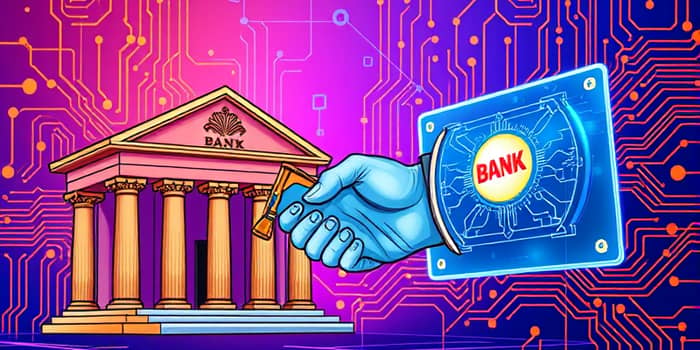In recent years, a wave of agile, technology-driven newcomers has reshaped the financial landscape. Fintech startups harness advanced tools to challenge centuries-old banking norms, compelling incumbents to innovate or risk obsolescence. From AI-powered chatbots to blockchain-based settlements, these disruptive players have opened new frontiers in speed, convenience, and personalization.
The Rise of Fintech Startups
Fueled by venture capital and consumer demand, fintechs have exploded onto the scene with modern technology like AI at their core. Neobanks such as Chime, SoFi, and Varo amassed over eight million app downloads in 2023 alone, demonstrating a robust appetite for digital-first experiences.
Embedded payments, commission-free trading, and on-demand lending highlight how startups can pivot quickly to address pain points. By prioritizing seamless user journeys, they have set new benchmarks for what customers expect from financial services.
Key Technologies Revolutionizing Banking
Several technological pillars underpin this transformation, each unlocking unique capabilities:
- Artificial Intelligence (AI): Powers faster credit assessments, personalized product recommendations, and proactive fraud detection through machine learning algorithms.
- Blockchain: Delivers secure, transparent, inexpensive transaction methods especially for cross-border payments, with the market forecast to reach $29.73 billion by 2032.
- Cloud Computing: Offers elastic infrastructure, enabling fintechs and banks to scale services quickly while managing large datasets cost-effectively.
- API/Open Banking: Facilitates data sharing and new integrated services and revenue-sharing models between legacy banks and agile startups.
Together, these technologies drive rapid digital transformation and innovation across product lines, from retail banking to institutional services.
Disruption Effects on Traditional Banks
The fintech surge has exerted significant pressure on banks to revisit their value propositions. Declining fee income and market share erosions have prompted many institutions to cut costs and revamp digital channels.
Empirical studies link fintech entry to decreased profitability for traditional banks—but also to accelerated innovation. Those that adopt fintech tools often see improvements in profit margins, liquidity ratios, and nonperforming loan metrics.
Business Model Innovation Among Fintechs
Fintech startups have pioneered fresh approaches to financial services. By eliminating brick-and-mortar overhead, they deliver higher yields on deposits and minimal transactional fees.
- Digital-only banks offering intuitive mobile interfaces.
- Peer-to-peer payment networks enabling instant transfers.
- On-demand lending platforms with real-time underwriting.
- Embedded finance solutions integrated into nonbank apps and e-commerce sites.
In the wake of the Silicon Valley Bank collapse, roughly 29% of outflows went to neobanks, while 50% migrated to J.P. Morgan—underscoring that both disruptors and incumbents can capitalize in times of uncertainty.
Traditional Banks' Response: Collaboration and Adaptation
Rather than fight alone, banks are partnering with fintech innovators to co-create value. HSBC teamed with Quantexa for AI-driven anti-money laundering analytics, while Barclays invested in Flux to digitize receipts and rewards within its app.
Goldman Sachs launched Marcus, a digital-first consumer finance arm, marking a paradigm shift toward cutting-edge AI-driven customer service solutions. Internally, banks embrace agile methodologies to shrink development cycles and reduce technical debt.
This table illustrates measurable gains in key metrics when banks integrate fintech innovations into their operations.
Risks and Challenges
Despite the upside, integrating fintech solutions introduces new vulnerabilities. Cybersecurity threats grow more sophisticated, and data privacy regulations continuously evolve. Banks must balance innovation speed with robust compliance frameworks.
Moreover, disparate regulatory environments can leave fintechs lightly supervised at first, creating an uneven playing field. Incumbents must architect risk management strategies that protect customers and maintain trust.
Future Outlook: Coopetition in Banking
Looking ahead, the line between fintech and banking will blur further. A “BankTech” movement—where collaboration and competition coexist—will define the next era of financial services.
Customers will demand hyper-personalized offerings delivered instantly across channels. Institutions that embrace fintech partnerships and foster a culture of continuous innovation will thrive; those that resist may face margin erosion and irrelevance.
In this dynamic landscape, the symbiosis between startups and banks offers a powerful blueprint for progress. By leveraging each other’s strengths, they can build a more inclusive, efficient, and resilient financial system for the digital age.
References
- https://www.sciencedirect.com/science/article/pii/S0148619524000730
- https://thefinancialbrand.com/news/fintech-banking/how-fintech-is-disrupting-traditional-banks-in-2024-175570
- https://execed.business.columbia.edu/disrupting-the-finance-world-how-fintech-is-changing-the-game-for-businesses
- https://www.kentico.com/discover/blog/traditional-banks-secure-future-in-fintech-era
- https://managementscienceresearchjournal.com/index.php/msr/article/download/118/114/461
- https://inoxoft.com/blog/fintech-vs-bank-can-fintech-replace-traditional-banking/
- https://www.heitmeyerconsulting.com/embracing-innovation-how-traditional-banks-can-compete-in-the-age-of-fintech/










